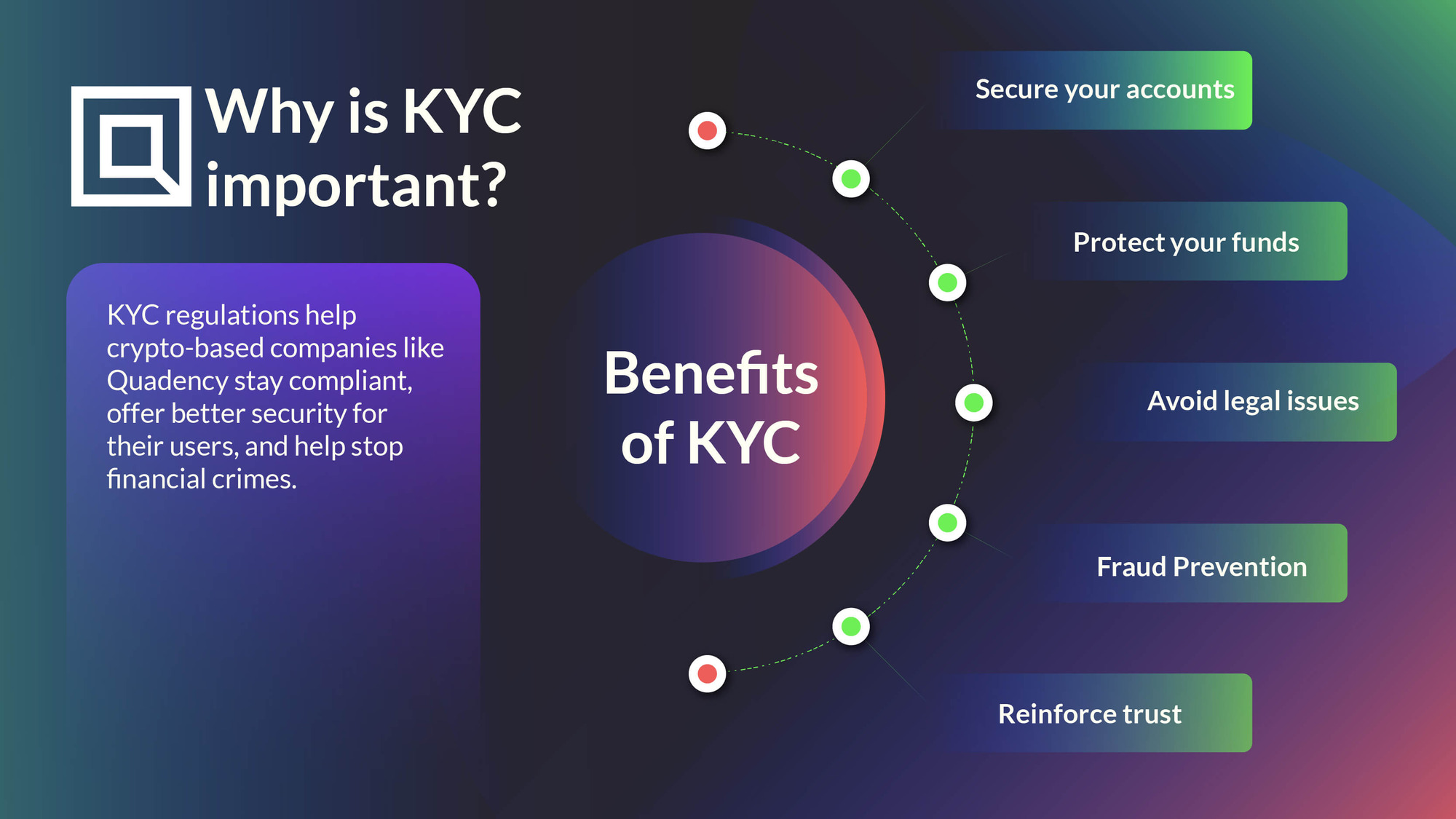What is Cryptocurrency?
Cryptocurrency is a type of digital or virtual currency that uses cryptography for secure financial transactions, control the creation of additional units, and verify the transfer of assets. Unlike traditional currencies issued by a central authority, such as a government or a bank, cryptocurrencies operate on decentralized networks based on blockchain technology.
The most well-known cryptocurrency is Bitcoin, which was created in 2009 by an anonymous person or group of people using the pseudonym Satoshi Nakamoto. Since then, thousands of other cryptocurrencies, also known as altcoins, have been developed, each with its own unique features and purposes.
One of the primary characteristics of cryptocurrencies is their decentralized nature. This means that there is no central authority or government controlling the transactions and issuance of cryptocurrency. Instead, transactions are validated by a network of computers called nodes, which maintain a public ledger known as the blockchain.
Another key aspect of cryptocurrencies is their use of cryptography to ensure secure transactions. Cryptography involves the use of mathematical algorithms to encrypt and decrypt information, providing a high level of security and preventing unauthorized access or fraud.
Furthermore, cryptocurrencies offer a degree of anonymity and privacy. While transactions on a blockchain are transparent and can be viewed by anyone, the identities of the parties involved in the transactions are usually pseudonymous. This gives individuals a certain level of privacy in their financial transactions.
In addition, cryptocurrencies provide a borderless financial system. Unlike traditional banking networks, cryptocurrencies can be sent and received across national borders without the need for intermediaries or costly transaction fees.
Overall, cryptocurrencies are revolutionizing the way we perceive and interact with money. They offer a decentralized, secure, private, and borderless alternative to traditional currencies, with the potential to empower individuals and disrupt traditional financial systems.
How Does Cryptocurrency Work?
Cryptocurrency operates on a technology called blockchain, which is a distributed ledger that records all transactions across a network of computers. This decentralized nature ensures transparency, security, and immutability in cryptocurrency transactions.
When a cryptocurrency transaction is initiated, it is added to a pool of unconfirmed transactions. Miners, who are participants in the cryptocurrency network, compete to solve complex mathematical puzzles to validate and confirm these transactions. This process is known as mining.
Once a miner successfully solves the puzzle, they add the verified transaction to a block and append it to the blockchain. This block contains a unique identifier called a hash, which is a cryptographic representation of the data within the block. Each subsequent block in the blockchain includes the hash of the previous block, creating a chronological chain of transactions.
To prevent tampering with the blockchain, the hash of each block is mathematically linked to the previous block’s hash, creating a secure and tamper-resistant system. If an unauthorized change is made to a block, the resulting hash will be different, alerting the network to the attempted manipulation.
Furthermore, cryptocurrency systems use consensus mechanisms to ensure agreement on the validity of transactions. The most common consensus mechanisms are Proof-of-Work (PoW) and Proof-of-Stake (PoS).
In a PoW system, miners must solve computational puzzles to add blocks to the blockchain. The energy and computational power required to solve these puzzles act as a deterrent to malicious activities, as it would be extremely costly to reverse or rewrite transactions.
In a PoS system, on the other hand, participants can validate transactions and create new blocks based on the number of coins they hold. This reduces the energy consumption associated with mining and promotes a more energy-efficient and environmentally friendly approach.
Once a block is added to the blockchain, the transaction is considered confirmed. At this point, the involved parties can verify the transaction’s details, such as the sender, recipient, and the amount transferred.
Users store their cryptocurrency holdings in digital wallets, which can be software-based applications, online platforms, or hardware devices. These wallets contain a set of cryptographic keys, including a public key for receiving funds and a private key for authorizing transactions.
Overall, the decentralized nature of cryptocurrency, combined with the use of blockchain technology and consensus mechanisms, ensures secure, transparent, and efficient transactions, revolutionizing the way we conduct financial activities.
The Creation of Cryptocurrency
The creation of cryptocurrency involves a combination of technical innovation, community participation, and economic principles. While different cryptocurrencies have varying methods of creation, the common thread among them is the use of blockchain technology and consensus algorithms.
One of the primary methods of creating cryptocurrency is through a process known as mining. Mining involves using specialized computers to solve complex mathematical problems, which validate and verify transactions on the blockchain network.
When a miner successfully solves the puzzle, they are rewarded with newly minted coins as an incentive for their computational work. This creates an ongoing supply of new coins, providing an economic incentive for individuals to participate in the network and contribute to its security and functionality.
However, not all cryptocurrencies rely on mining for creation. Some cryptocurrencies, such as Ripple (XRP), were pre-mined, meaning that a certain amount of coins was created and held by the founders or developers before the cryptocurrency was made available to the public.
Another method of creating cryptocurrency is through an Initial Coin Offering (ICO). An ICO is a crowdfunding mechanism in which a new cryptocurrency project offers its tokens or coins to investors in exchange for traditional currencies or other cryptocurrencies. The funds raised during an ICO are then used to develop and support the project.
Furthermore, the creation of cryptocurrency is influenced by economic principles such as supply and demand. The scarcity of coins, determined by factors like the total supply and the rate of release, can impact the value and market price of the cryptocurrency.
Additionally, the community surrounding a cryptocurrency plays a crucial role in its creation. Cryptocurrency projects often involve communities of developers, enthusiasts, and investors who collaborate and contribute their expertise to build and improve the technology.
It is important to note that not all cryptocurrencies are created equal. The creation process, distribution, and governance of each cryptocurrency can vary significantly based on its underlying technology and the goals of its creators.
Overall, the creation of cryptocurrency is a multifaceted process that combines technical innovation, economic principles, and community involvement. The various methods of creation, such as mining, pre-mining, and ICOs, contribute to the diverse landscape of cryptocurrencies available today.
Mining
Mining is an integral part of the process in creating and confirming transactions in many cryptocurrencies. It plays a crucial role in maintaining the security, integrity, and decentralization of cryptocurrency networks.
In the context of cryptocurrency, mining refers to the computational process of solving complex mathematical puzzles to validate and add new transactions to the blockchain. Miners, who are individuals or entities with specialized hardware and software, compete against each other to be the first to solve these mathematical problems.
When a miner successfully solves the puzzle, they are rewarded with a certain amount of newly created cryptocurrency coins. This process incentivizes miners to dedicate computational power and resources to secure the network and contribute to the transaction verification process.
The mathematical puzzles that miners solve are designed to be resource-intensive, requiring significant computational power. This mechanism, known as Proof-of-Work (PoW), ensures that mining is not only a competitive process but also acts as a deterrent to malicious actors who may attempt to manipulate the blockchain.
Mining serves two primary purposes in cryptocurrency networks:
- Transaction Validation: When a miner successfully solves the puzzle, they validate and confirm a block of transactions. These transactions are then added to the blockchain, ensuring their security and immutability.
- Creation of New Coins: Miners are rewarded with newly created coins as an incentive for their computational work. This process introduces new coins into circulation, adding to the cryptocurrency’s overall supply.
It is important to note that not all cryptocurrencies rely on mining as their consensus mechanism. Some cryptocurrencies, such as Ethereum, are transitioning from PoW to a different consensus protocol called Proof-of-Stake (PoS).
In a PoS system, participants are selected to validate and create new blocks based on the number of coins they hold and are willing to “stake.” This reduces the computational and energy requirements of mining compared to PoW, making it a more environmentally friendly alternative.
Despite the potential environmental impact, mining has played a significant role in the growth and development of cryptocurrencies. It ensures the security and decentralization of blockchain networks while providing an incentive for individuals to participate in the ecosystem.
Overall, mining is a fundamental process in the creation and validation of transactions in many cryptocurrencies. It facilitates secure transactions, introduces new coins into circulation, and supports the decentralization of blockchain networks.
Proof-of-Work vs Proof-of-Stake
Proof-of-Work (PoW) and Proof-of-Stake (PoS) are two commonly used consensus mechanisms in cryptocurrency networks. While both serve the purpose of validating and adding transactions to the blockchain, they differ in their approach and underlying principles.
Proof-of-Work (PoW):
Proof-of-Work is the original consensus mechanism and is widely used in cryptocurrencies such as Bitcoin and Ethereum. In a PoW system, miners compete against each other to solve complex mathematical puzzles using computational power. The first miner to solve the puzzle gets the opportunity to validate and add a block of transactions to the blockchain and is rewarded with newly minted coins.
This competitive process requires substantial computational power and energy consumption, as miners need to continuously perform complex calculations. The difficulty of solving these puzzles is adjusted regularly to maintain a consistent rate of block creation, ensuring the security and integrity of the blockchain. PoW enables a decentralized network, as no single entity can control the majority of the computational power and manipulate the blockchain.
However, PoW has faced criticism for its high energy consumption and potential centralization issues due to the concentration of mining power in the hands of large-scale mining operations. To address these concerns, alternative consensus mechanisms, such as Proof-of-Stake, have been introduced.
Proof-of-Stake (PoS):
Proof-of-Stake is an alternative consensus mechanism that has gained popularity due to its lower energy consumption and potential for increased scalability. In a PoS system, participants, known as validators, are chosen to create new blocks based on their stake in the network. The stake typically refers to the number of coins they hold and are willing to “lock up” as collateral.
Rather than competing against each other, validators take turns creating blocks, with the probability of being selected determined by the size of their stake. Validators are incentivized to act honestly, as they have “skin in the game” and can lose a portion of their stake if they attempt malicious activities. PoS aims to create a more energy-efficient and environmentally friendly consensus mechanism.
While PoS offers advantages such as reduced energy consumption and potentially higher scalability, it introduces its own challenges. One key concern is the “nothing at stake” problem, where validators could theoretically create multiple chains and divide their stake among them. To mitigate this, PoS mechanisms implement various mechanisms, such as penalties for dishonest behavior.
It is worth noting that different cryptocurrencies employ different variations or combinations of consensus mechanisms, aiming to leverage the strengths of each approach while addressing their limitations. Some cryptocurrencies, like Ethereum, are transitioning from PoW to PoS to enhance scalability and reduce energy consumption.
Overall, both PoW and PoS have their pros and cons, and their suitability depends on the specific requirements and goals of a cryptocurrency network. As the cryptocurrency ecosystem continues to evolve, new consensus mechanisms may emerge to address the challenges of scalability, energy efficiency, and decentralization.
The Role of Nodes
Nodes play a crucial role in the functioning and security of cryptocurrency networks. They serve as the backbone of the decentralized infrastructure, facilitating the validation and propagation of transactions across the network.
Nodes can be considered as individual computers or devices that participate in the cryptocurrency network. Each node maintains a copy of the blockchain, which is a public ledger containing all the transactions that have occurred within the network.
There are different types of nodes, serving specific functions within the network:
- Full Nodes: Full nodes store a complete copy of the blockchain and participate in the validation and verification of transactions. They can independently verify the entire blockchain’s history and validate transactions based on predefined rules. Full nodes play a crucial role in maintaining the security, transparency, and integrity of the network.
- Miner Nodes: Miner nodes, as the name suggests, participate in the mining process. They compete against each other to solve mathematical puzzles and validate transactions by adding them to the blockchain. These nodes require substantial computational power and specialized hardware to participate in the mining process.
- Lightweight Nodes: Lightweight nodes, also known as SPV (Simplified Payment Verification) nodes, do not store a complete copy of the blockchain. Instead, they rely on full nodes to provide them with transaction information and validate transactions. Lightweight nodes are commonly used in mobile wallets or applications that prioritize speed and storage efficiency.
- Masternodes: Masternodes are specialized nodes that often serve additional functions to enhance the functionality and features of a cryptocurrency network. They typically require a certain number of coins as collateral to operate and provide services such as instant transactions, privacy features, and decentralized governance.
Nodes communicate with each other and propagate new transactions and blocks across the network. When a new transaction is created, it is broadcasted to the network, and the nodes work together to validate and add it to the blockchain. This decentralized approach ensures that no single authority is in control and that the network operates transparently and securely.
Nodes also play a crucial role in reaching consensus on the state of the blockchain. Through mechanisms like Proof-of-Work or Proof-of-Stake, nodes compete to validate transactions and create new blocks. Consensus is achieved when the majority of nodes agree on the validity of transactions and the order in which they are added to the blockchain.
Furthermore, nodes contribute to the decentralization and security of the network. With multiple nodes spread across the globe, the network becomes resistant to censorship and single points of failure. If one node goes offline or becomes compromised, the other nodes can maintain the integrity and functionality of the network.
In summary, nodes are essential components of cryptocurrency networks. They maintain copies of the blockchain, validate transactions, and propagate them across the network. By participating in consensus mechanisms, nodes contribute to the security, transparency, and decentralization of the cryptocurrency ecosystem.
Cryptocurrency Wallets
Cryptocurrency wallets are essential tools that allow individuals to store, manage, and interact with their digital assets. These wallets provide a secure and convenient way to store cryptocurrencies, manage multiple addresses, and facilitate transactions within the cryptocurrency ecosystem.
A cryptocurrency wallet, in essence, is a software application or hardware device that securely stores the private keys required to access and manage a user’s cryptocurrency holdings. The private keys are crucial as they are used to sign transactions, proving ownership of the associated cryptocurrency.
There are various types of cryptocurrency wallets available, offering different levels of security and ease-of-use:
- Software Wallets: Software wallets are applications that can be installed on computers, smartphones, or tablets. They provide users with control over their private keys and allow for convenient access to cryptocurrencies. Examples of software wallets include Exodus, Jaxx, and MetaMask.
- Web Wallets: Web wallets are online wallets accessible through web browsers. While they offer convenience, web wallets also introduce a higher level of risk, as they are connected to the internet and managed by third parties. Users need to ensure they are using reputable and secure web wallet providers.
- Hardware Wallets: Hardware wallets are physical devices designed specifically for storing and securing cryptocurrency private keys. They offer offline storage, reducing exposure to potential online threats and hacking attempts. Popular hardware wallets include Ledger and Trezor.
- Paper Wallets: Paper wallets involve the printing of cryptocurrency address and private key information on a physical piece of paper. Paper wallets are considered “cold storage,” as they are not connected to the internet. Users need to ensure the safekeeping of the paper wallet and keep it away from potential damage or loss.
Regardless of the type of wallet chosen, it is crucial to prioritize security. This includes implementing strong passwords, enabling multi-factor authentication, and keeping software and firmware up to date.
When using a cryptocurrency wallet, users can perform various tasks, such as:
- Receiving: Users can provide their cryptocurrency address to receive funds from others. Each cryptocurrency has a unique address format, and it is important to verify the accuracy of the address before sharing it.
- Sending: Wallets allow users to send cryptocurrencies to other individuals or addresses. Users need to specify the recipient’s address and the amount they wish to send.
- Managing Multiple Addresses: Wallets can manage multiple addresses associated with different cryptocurrencies, making it convenient for users who hold a diverse portfolio of digital assets.
- Tracking Transactions: Cryptocurrency wallets provide transaction history and allow users to track the status of their transactions on the blockchain.
Cryptocurrency wallets are a critical component of the cryptocurrency ecosystem, enabling users to securely store, manage, and transact with their digital assets. Choosing the appropriate wallet type and implementing robust security measures is essential to protect investments and ensure peace of mind for cryptocurrency holders.
Security Considerations
Security is of utmost importance when it comes to handling and managing cryptocurrencies. With the increasing value and popularity of digital assets, it is crucial to be aware of and implement proper security measures to protect against potential risks and threats. Here are some key security considerations to keep in mind:
Wallet Security: It is essential to choose a reputable and secure cryptocurrency wallet. Whether it’s a software wallet, a hardware wallet, or a web wallet, ensure that the wallet provider has a proven track record of security and regularly updates their software to address vulnerabilities.
Private Key Management: Private keys are the access codes to the ownership and control of cryptocurrencies. Keep private keys secure and never share them with anyone. Consider using hardware wallets or paper wallets for offline storage, as they provide an added layer of protection against online threats.
Two-Factor Authentication (2FA): Enable and use two-factor authentication whenever possible. This adds an extra layer of security by requiring a second verification step, such as a code sent to your mobile device, when logging into your wallet or making transactions.
Phishing and Scams: Be vigilant against phishing attempts and scams. Exercise caution when clicking on unknown links, downloading suspicious files, and providing personal information. Always verify the authenticity of websites and applications before entering your credentials or making transactions.
Regular Software Updates: Ensure that your wallet software, operating system, and other relevant software are kept up to date with the latest security patches. Regular updates help protect against known vulnerabilities and exploits.
Secure Internet Connections: When accessing your cryptocurrency wallet or making transactions, use secure and trusted internet connections. Avoid using public or unsecured Wi-Fi networks that may be susceptible to eavesdropping or man-in-the-middle attacks. Consider using a virtual private network (VPN) for added security.
Backup and Recovery: Regularly backup your wallet and private keys to a secure location. In the event of device damage, loss, or theft, having a backup ensures that you can restore access to your cryptocurrencies. Follow the wallet provider’s guidelines for secure backup and recovery processes.
Secure Physical Storage: If you’re using physical wallets like hardware wallets or paper wallets, keep them in a safe and secure location. Protect them from potential physical damage, theft, or loss.
Educate Yourself: Stay informed about the latest security best practices and threats in the cryptocurrency space. Follow reputable sources, participate in community discussions, and consider joining forums or groups where you can learn from experienced cryptocurrency users.
Social Engineering Awareness: Be cautious of social engineering attacks where individuals try to manipulate or deceive you into revealing sensitive information or providing access to your cryptocurrencies. Be skeptical of unsolicited requests for personal information, even from seemingly trusted sources.
By being proactive and implementing these security considerations, you can significantly reduce the risks associated with cryptocurrencies and protect your digital assets from unauthorized access or loss.
Challenges in Cryptocurrency Creation
The creation of a cryptocurrency involves various challenges that developers and creators must address in order to build a successful and sustainable digital asset. These challenges include technical, regulatory, and adoption-related hurdles that impact the creation and long-term viability of cryptocurrencies.
Technical Complexity: Creating a cryptocurrency involves resolving complex technical challenges. Developing a secure and decentralized blockchain infrastructure requires expertise in areas such as cryptography, distributed systems, consensus algorithms, and network security. Ensuring the scalability, efficiency, and interoperability of the cryptocurrency can also be daunting tasks.
Regulatory Compliance: Cryptocurrencies often operate in a regulatory gray area. Compliance with existing financial regulations, such as anti-money laundering (AML) and know your customer (KYC) requirements, poses challenges for cryptocurrency creators. Navigating evolving regulatory frameworks and ensuring compliance with jurisdiction-specific regulations can be a complex task.
Security Vulnerabilities: Cryptocurrencies are vulnerable to security breaches, hacks, and exploits. Weaknesses in smart contracts, vulnerabilities in wallet software, and centralized points of failure can lead to significant financial losses for users. Developers must prioritize robust security measures, conduct rigorous testing, and perform regular audits to address potential vulnerabilities and protect users’ funds.
Scalability: The scalability of cryptocurrencies has been a prominent challenge as adoption and transaction volumes increase. Traditional blockchains face limitations in terms of transaction speed and throughput, resulting in slower confirmation times and higher transaction fees. Addressing scalability issues often requires innovative solutions such as layer 2 protocols, sharding, or off-chain scaling solutions.
Interoperability: In a highly fragmented cryptocurrency ecosystem, achieving interoperability between different blockchain networks and protocols can be challenging. Enabling seamless communication and value transfer between different cryptocurrencies and platforms is key to enhancing adoption and facilitating efficient decentralized applications.
Mass Adoption: Achieving widespread adoption of cryptocurrencies remains a challenge. Overcoming barriers such as user education, user experience, and ease of use is crucial in attracting users who may be unfamiliar or skeptical of the technology. Enhancing user interfaces, improving accessibility, and promoting real-world use cases are essential in driving mainstream adoption.
Market Volatility: Cryptocurrencies are known for their price volatility, which can create challenges for both investors and businesses. High price fluctuations can deter businesses from accepting cryptocurrencies as payment, and investors may face significant financial risks. Developing stable cryptocurrencies or creating mechanisms to reduce volatility can help address this challenge.
Energy Efficiency: Proof-of-Work (PoW) consensus mechanisms, which are commonly used in cryptocurrency creation, require substantial energy consumption. This has led to concerns about the environmental impact of cryptocurrencies. Transitioning to more energy-efficient consensus mechanisms, such as Proof-of-Stake (PoS), is a challenge that can help address these environmental concerns.
Education and Perception: The lack of widespread understanding about cryptocurrency technology and its benefits can hinder adoption. Promoting education and dispelling myths surrounding cryptocurrencies is crucial in building trust and fostering acceptance among individuals and institutions.
Overcoming these challenges requires ongoing research, collaboration, and innovation within the cryptocurrency community. By addressing technical, regulatory, and adoption-related hurdles, creators can contribute to the development of a robust and inclusive cryptocurrency ecosystem.
Conclusion
Cryptocurrency has emerged as an innovative and disruptive technology that holds the potential to revolutionize the world of finance. Its decentralized nature, enhanced security, and borderless nature have attracted individuals, businesses, and investors alike. Understanding the underlying principles and processes behind cryptocurrency creation is essential for grasping its significance and potential.
Throughout this article, we have explored multiple aspects of cryptocurrency creation. We delved into the definition of cryptocurrency and its fundamental features, including decentralization, cryptography, and anonymity. We discovered how cryptocurrencies work through the utilization of blockchain technology and the consensus mechanisms of Proof-of-Work and Proof-of-Stake, which validate and secure transactions on the network.
We also discussed the creation process of cryptocurrencies, such as mining, initial coin offerings (ICOs), and the role of the cryptocurrency community. Furthermore, we explored the crucial functions of nodes, which maintain the distributed ledger and enable the validation and propagation of transactions.
Additionally, we examined the significance of cryptocurrency wallets in securely storing and managing digital assets, as well as the importance of implementing strong security measures to safeguard against risks and threats. We explored challenges in cryptocurrency creation, such as technical complexities, regulatory compliance, scalability, and market volatility.
It is evident that the world of cryptocurrency creation is a dynamic and evolving space. As the technology advances and adoption increases, we can anticipate further innovations and solutions to overcome the challenges that arise. It is crucial for creators and users alike to remain informed, adapt to changing circumstances, and prioritize security and responsible practices to unlock the full potential of cryptocurrency.
Cryptocurrency creation is not just limited to coding and algorithms; it represents a transformative movement that empowers individuals, enhances financial inclusivity, and challenges traditional financial systems. By understanding the intricacies and considerations involved in cryptocurrency creation, we can actively participate in shaping the future of finance.

























